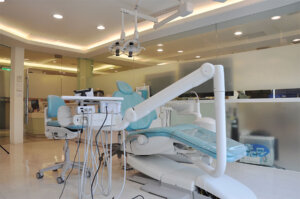Dental Chairs: The Heart of the Dental Clinic
In the realm of dentistry, where precision and comfort are paramount, dental chairs stand as the heart of any dental clinic. These sophisticated pieces of equipment are not just seats; they are highly engineered platforms designed to enhance both patient comfort and clinical efficiency. Dental chairs have evolved significantly over the years, integrating advanced technologies that cater to the needs of modern dental practices.
Patient Comfort and Ergonomics
One of the most critical aspects of a dental chair is its ability to provide a comfortable experience for patients. With adjustable headrests, backrests, and leg supports, these chairs can be customized to accommodate individuals of various sizes and shapes. The ergonomic design ensures that patients remain relaxed during lengthy procedures, minimizing any discomfort that might arise from prolonged sitting. The chairs are often upholstered with easy-to-clean materials that are both hygienic and soft to the touch, contributing to a soothing environment.
Operational Efficiency and Accessibility
For dental professionals, operational efficiency is key. Dental chairs feature control panels integrated into the armrests or sides, allowing for quick adjustments by the dentist or dental assistant without interrupting the workflow. Many models boast smart positioning systems that enable swift movement to pre-set positions, saving time and enhancing the fluidity of the treatment process. Integrated features such as LED lights, suction units, and water sprays are strategically placed for easy access, streamlining operations and improving the overall treatment experience.
Technology Integration and Innovation
Modern dental chairs incorporate cutting-edge technology to elevate the standard of care. Some chairs come equipped with built-in digital X-ray sensors, intraoral cameras, and even patient entertainment systems, providing comprehensive services in one convenient location. Smart controls, including touchscreens and voice commands, simplify the operation of the chair, while wireless connectivity allows for seamless integration with other dental equipment and software systems. These technological advancements not only improve diagnostic accuracy but also contribute to a more patient-centric approach to dentistry.
Maintenance and Durability
Built with high-quality materials and robust engineering, dental chairs are designed to withstand the rigors of daily use. Regular maintenance is simplified by the modular construction of many models, which facilitates easy access to components for cleaning and repair. This ensures that the chair remains in optimal condition throughout its lifespan, reducing downtime and maintenance costs.
Aesthetics and Branding
Beyond functionality, dental chairs play a significant role in the aesthetic appeal of a dental practice. Sleek designs and customizable color options allow clinics to align their equipment with their branding and interior decor, creating a cohesive and professional atmosphere. A well-presented dental chair can instill confidence in patients and reflect the clinic’s commitment to quality and attention to detail.
In conclusion, dental chairs are indispensable tools in the dental industry. They represent the convergence of patient care, clinical performance, and technological innovation. As the backbone of dental clinics worldwide, these chairs continue to evolve, driven by the needs of dental professionals and the expectations of patients for a safe, efficient, and comfortable dental experience.







